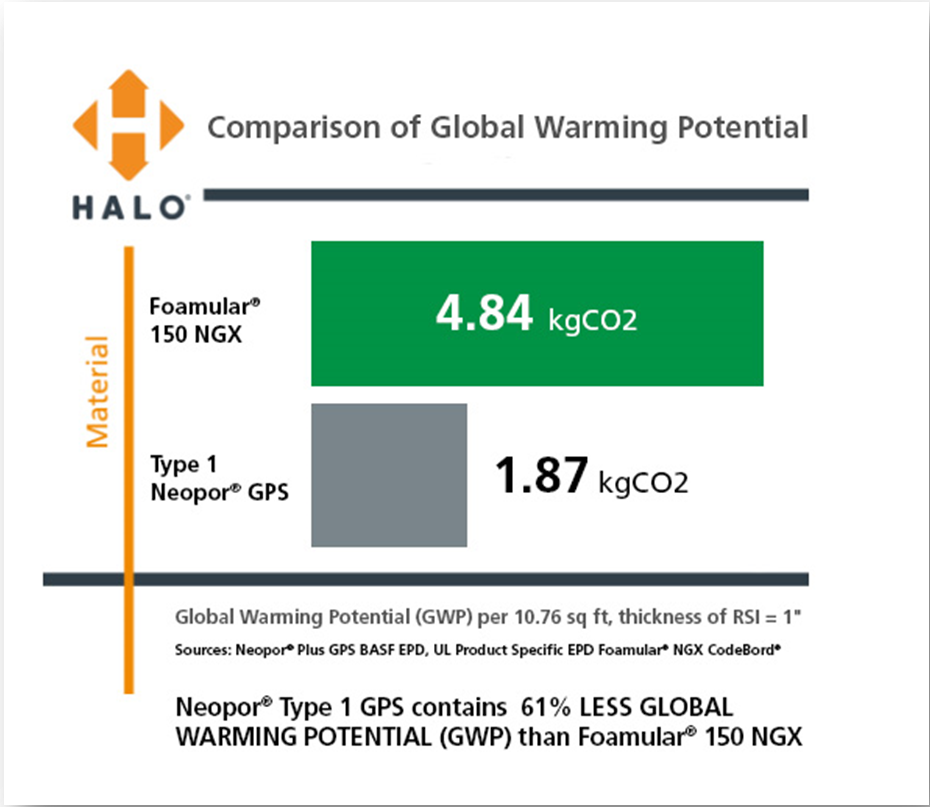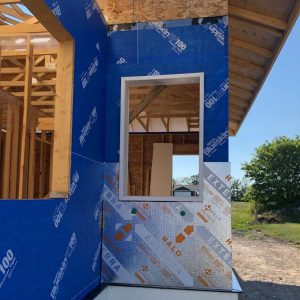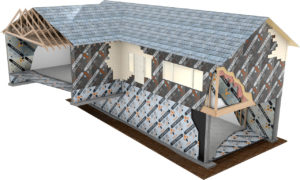Introducing a building material that integrates top-notch thermal performance with a low embodied carbon content – Neopor Graphite Polystyrene (GPS). GPS is the foam core in Halo products. It comes with superior sustainability attributes and without added costs.
The Embodied Carbon Perspective
Embodied carbon is discharged during the production, shipment and installation of building products.
As green building practices catch on across the globe, Environmental Product Declarations (EPD’s) have emerged as a way for builders to assess the embodied carbon levels of different building products.
These EPD’s tell us that Type 1 Neopor GPS, which is predominantly used to make the foam core in many Halo products, has 61% less global warming potential than a leading XPS insulation product, and up to 21 times less than some others!
How is this possible?
The higher carbon content of XPS comes from the blowing agents used in its production.
HFC-134a and HFC-142b are two such gasses and contain 1,420 and 2,310 times more GWP than carbon dioxide, respectively.
Opteon 1100 is another blowing agent that is used in some newer XPS products. Although it’s GWP is lower, Opteon 1100 nevertheless still contains about 80 times more GWP than carbon dioxide.
Here is a graphic comparing the Global Warming Potential contained in Type 1 Neopor GPS (which is used in the manufacturing of Halo Exterra products) with a leading XPS product that is actually made with the “improved” blowing agent Opteon 1100.

Meanwhile, XPS products made with the original HFC-134a and 142b blowing agents can emit up to 21 times more CO2 than GPS!
The Operational Carbon Perspective

Don't miss a thing!
Subscribe for exclusive content, insider industry news and limited edition webcasts.
Operational carbon emits as fossil fuels burn to heat and cool homes and buildings.
The less our homes rely on space conditioning to maintain their climate, the lower their operational carbon emissions. To gain this passive control over heating and cooling, buildings need insulation with high, stable R-values.
Thanks to their graphite content, Halo’s insulation products offer 18% higher R-values than regular expanded polystyrene (EPS). The difference comes from graphite’s capacity to trap and reflect heat, which EPS lacks on its own.
Compared to the thermal resistance of extruded polystyrene (XPS), GPS fairs about the same; except its R-value last longer.
With their high R-values, Halo’s panels curb heat movement and reduce strain on heating and cooling systems. In addition to leaving a lower carbon footprint, GPS-insulated homes also keep their owners’ energy bills low.
Wrapping it up
You have every right to worry about the added costs of building sustainably.
Halo’s GPS foam core offers a lower embodied carbon footprint, provides top, long-lasting R-values, and is often less expensive than its XPS peers.
So, why not embrace a fairly-priced, sustainable product with superior performance?
Sources
https://buildwithhalo.com/product-performance-series/gps-vs-xps-air-vapor-permanence/
https://www.statista.com/topics/1169/green-buildings-in-the-us/
https://www.buildingtransparency.org/en/







